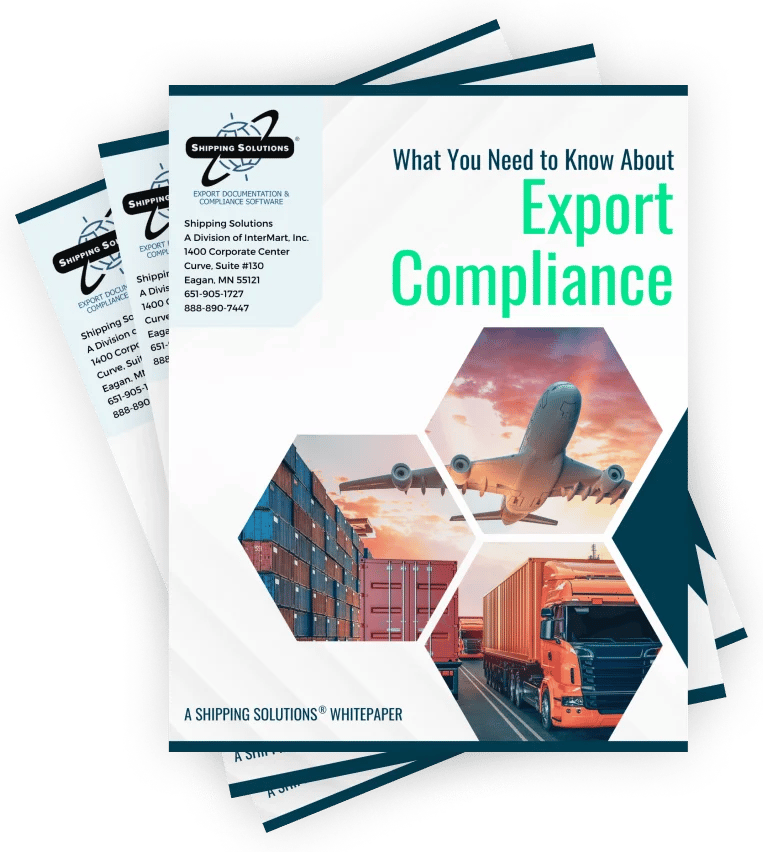The International Trade Blog Export Compliance
The ITAR Compliance Checklist
On: January 11, 2023 | By:  David Noah |
6 min. read
David Noah |
6 min. read
 We live in a scary world. We have to protect our country, particularly when it comes to exporting defense-related products including weaponry and military equipment (and components, parts, accessories, etc.) to other countries.
We live in a scary world. We have to protect our country, particularly when it comes to exporting defense-related products including weaponry and military equipment (and components, parts, accessories, etc.) to other countries.
By regulating the export of these products, the U.S. State Department’s Directorate of Defense Trade Controls (DDTC) helps protect U.S. national security so this sensitive information and technology does not get into the wrong hands. Details are found primarily within the International Traffic in Arms Regulations (ITAR).
Because ITAR deals in cases of national security, it is more restrictive than the export controls addressed in the Export Administration Regulations (EAR). (You'll find a compliance checklist geared toward EAR-controlled products in our article 6 Basic Steps for Export Compliance.) Here's a checklist that exporters of DDTC-controlled items can use as a jumping off point for entering the murky waters of ITAR.
The ITAR Compliance Checklist
Exporters must know what is required of them in order to be compliant. This includes the following steps:
1. Determine Jurisdiction
Is the product ITAR or is it EAR? You need to know which government agency has jurisdiction over your products and be familiar with the regulations that govern each agency in order to classify and export.
If your product is on the U.S. Munitions List (USML), the State Department has jurisdiction over your export. Your company must be registered with the State Department, and you must apply for an export license through the State Department. If you don’t see your product on the USML, then it may be under the jurisdiction of the U.S. Department of Commerce's Bureau of Industry and Security (BIS); these items require EAR classification to export.
If you need help determining which agency has jurisdiction over your product, you can submit a Commodity Jurisdiction (CJ) request to DDTC via the online CJ Request Form. You'll find more information about this process at the DDTC website.
2. Review the ITAR
Once you’ve determined your product is under the jurisdiction of ITAR, you need to understand all ITAR entails and how it’s laid out.
The Arms Export Control Act (AECA) authorizes the president to designate items considered defense articles and services, and these items constitute the USML. The ITAR implements the AECA and is managed by the DDTC under the State Department.
The ITAR is divided into 11 parts, and it is intentionally vague and open to interpretation. This allows the government the most flexibility and control over the military articles and services and, again, to protect the U.S. from national security and anti-terrorism acts. Read Understanding ITAR—the International Traffic In Arms Regulations to find out more.
3. Register with Directorate of Defense Trade Control
ITAR requires that you register. Here's how to do it:
- Pay the registration fees.
- Complete the registration form.
- Gather supporting documentation.
- Upload the registration pack.
The average review time for a registration request is 45 days. We recommend you send your complete registration package electronically through the Electronic Form Submission (EFS) up to a maximum of 60 days in advance of the renewal expiration.
4. Classify Your Goods Using the U.S. Munitions List
As previously mentioned, the AECA authorizes the President to designate items that could be considered defense articles and services—what’s known as the USML. The USML is divided into 16 sections, with seven sections reserved for future use, one section addressing the general USML list, and the remaining sections further describing and adding to the USML. In order to help you understand the steps you need to follow in reviewing the USML, the DDTC has a decision tool available on its website.
Additionally, Shipping Solutions Product Classification Software provides several search methods that make this product classification process faster and easier than the traditional method of pouring through volumes of printed books and regulations—give it a try for free.
5. Know the End Use and End User
Determine how the product will ultimately be used and who will ultimately use it. Check out Export Compliance: The Importance of Knowing End Use and End Users for more on this topic.
Know prohibited destinations. Make sure you’re not attempting to send your goods to a prohibited country. ITAR also requires a Destination Control Statement, or a reference to this statement, be included within licensing, manufacturing and distribution agreements. As of 2016, the Destination Control Statement can be used by exporters regardless if their goods fall under the jurisdiction of BIS or State Department.
Screen all parties. This important step should happen for every single export. We make it easy and affordable with Shipping Solutions’ Restricted Party Screening Software, which lets you run 140+ screenings with the click of a button.
6. Apply for an Export License
If your product is on the USML, you must apply for an export license through the State Department. (If you don’t see your product on the USML, then it may be under the jurisdiction of Bureau of Industry and Security (BIS). If so, these items require Export Administration Regulations (EAR) classification prior to export.)
Guidelines and instructions for completing license application forms and additional considerations for attaining an agreement and/or license are available on the DDTC website. We can also help you determine if a license is required for your items with Shipping Solutions Export Controls Software.
7. Fulfill Reporting Requirements
You should record all ITAR activities including, but not limited to, registration, manufacture, acquisition, disposition and minutes, notes, drawing, etc. These records must be maintained in an organized and easily accessible fashion and available at all times for inspection by DDTC. (See 22 CFR 122.5 for details.) I recommend you go beyond these minimal requirements and follow the EAR recordkeeping requirements and industry best practices for recordkeeping.
Keeping minimal or insufficient records could hurt (or even destroy) your company. If it’s too hard for DDTC to follow or understand your paperwork, you will be more likely to face punishments and penalties. If your records are easy to follow, clear, and concise, you may spare yourself from a penalty or have a mitigating factor should a penalty be incurred.
8. Create and Maintain an Export Compliance Program
Creating and following an Export Compliance Program (ECP) is a recommended best practice for EAR exports, but for ITAR it’s almost a mandate. The Office of Defense Trade Controls Compliance strongly advises exporters engaged in defense trade to establish and maintain an ITAR/export compliance program to help protect our nation’s sensitive technologies. In December 2022, DDTC released an updated set of ITAR Compliance Program Guidelines. You can download the guidelines in PDF format from the DDTC website.
According to the DDTC:
In designing a compliance program, you need to understand how your business works to determine your risk areas. Possessing defense articles or technical data raises your risk of an inadvertent violation. Many companies that don’t engage in manufacturing, exporting, or brokering, still maintain compliance programs to reduce the risk of such violations.
A good ECP is generally:
- Clearly documented in writing.
- Tailored to the business.
- Regularly reviewed/updated.
- Fully supported by management.
We have a free ECP whitepaper download that outlines all the necessary components of an ECP and helps you get started creating your own. Additionally, Shipping Solutions software has a shipment log that helps you create a paper trail for every transaction you enter. You can schedule a free demo of the software here.
Like what you read? Subscribe today to the International Trade Blog to get the latest news and tips for exporters and importers delivered to your inbox.
This article was originally published in November 2018. It has been updated to include current information, links and formatting.

About the Author: David Noah
As president of Shipping Solutions, I've helped thousands of exporters more efficiently create accurate export documents and stay compliant with import-export regulations. Our Shipping Solutions software eliminates redundant data entry, which allows you to create your export paperwork up to five-times faster than using templates and reduces the chances of making the types of errors that could slow down your shipments and make it more difficult to get paid. I frequently write and speak on export documentation, regulations and compliance issues.



